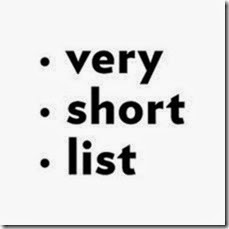Define your purpose and passion in a written Employer Description.
- The skills and responsibilities you love to do.
- The industries that interest you. Industries change the nature of the job changes. For example, a manager in a manufacturing company, a bank, a fast food service. You have the same job title, the same kind of responsibilities of boy is the job different.
- The size of the organization. Do you want to work for a startup, a smaller organization, medium, large or global?
- Who owns the organization. Stockholders, private yourself, we the people or no ownership. That's nonprofits.
- Location, both the geographic locale (country, state, city). Locale means metro, urban, suburban, rural or virtual.
- The most important and the most overlooked element of the job is the environment you want to work in, the physical, cultural, leadership style, and more. It's the environment that usually impacts our happiness on the job and it's the one we do the least to prepare for, identify and verify.
Adopt the How can I help? attitude
Ask questions to gather information about wants and needs
- Review the literature on their web site, annual reports, press releases, LinkedIn or professional association articles.
- Ask people general questions. These are the people who aren't doing the job you want to do, but they work in organizations that may have do the work you do. Ask how the organization they work for does what you do, what they do well, and what the could do better. Also ask who else you could talk to gather more information.
- Ask people technical questions. Those are the people who are doing the job you want to do or related to it. These questions can be more detailed about projects, goals, and objectives they are trying to achieve; problems or challenges they are encountering; industry trends and news, software platforms and upgrades.
Prove you are the solution they need
Once you've gathered the information and found those people who need and want help, your next task is to prove you are the solution they need. You prove this in phone calls, interviews, meetings, reconnecting after interviews/meetings, and in your written materials. Prove you are the solution they need because you can 1) do the job they want done, 2) you will fit into their team, and 3) you are going to be a great return on investment.Provide specific examples (including #, $, %s) to prove you are the solution. We suggest
- Present your dessert tray of hobbies, civic service, education, work experience, words that describe you, and home run statements
- Prepare 36 statements based on a ball diamond: 1st base=where you worked, 2nd base=what you did, 3rd=the results your work generated, and home plate=a question that applies the example to their organization ("Are those the results you want?")
- Reframe their thinking about your weaknesses or negatives
- Ask questions to gather information to be able to answer the questions.
Make your 10s: 10 Contacts a day and 10 Meetings a week
- 4-5 of the 10 conversations you will ask the questions you've prepared to gather information
- 2-3 of the 10 contacts will be to schedule face to face meetings
- 2-3 will be to reconnect on prior context or meetings that you have already had.
- 5-7 to gather information
- 3-5 to impress decision makers you can help them achieve their goals or solve their problems
- 10 people from your phone or email contacts
- 20 from your LinkedIn, Facebook, professional associations and directories
- 10 following up on previous contacts for meetings
- 7 from advertised job opportunities
- 3 from other sources.






